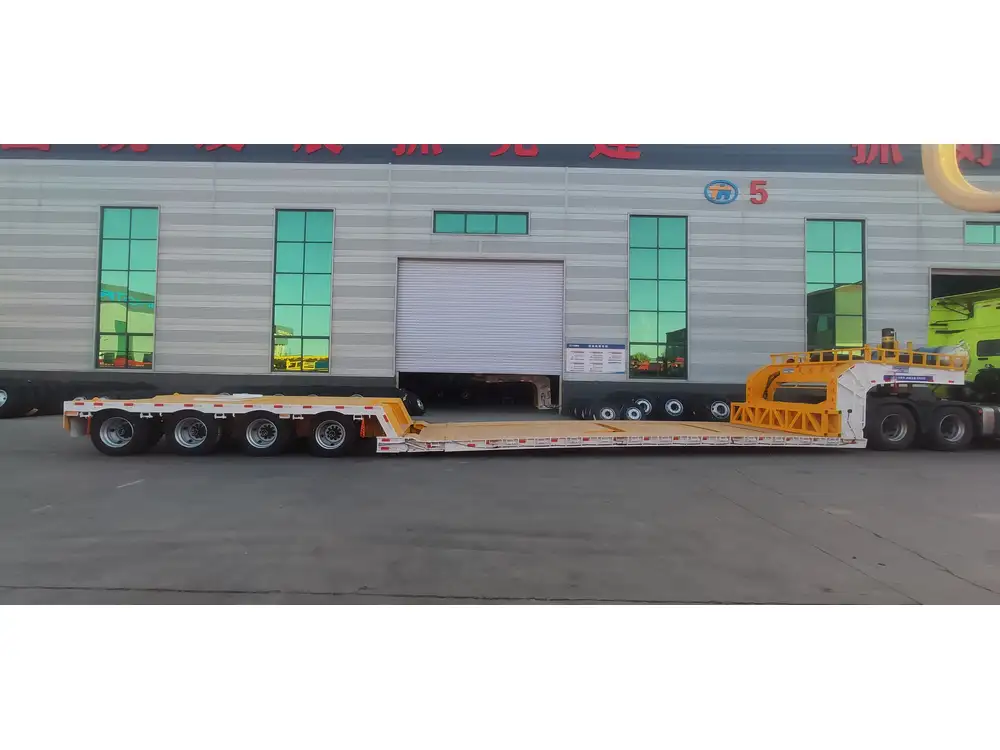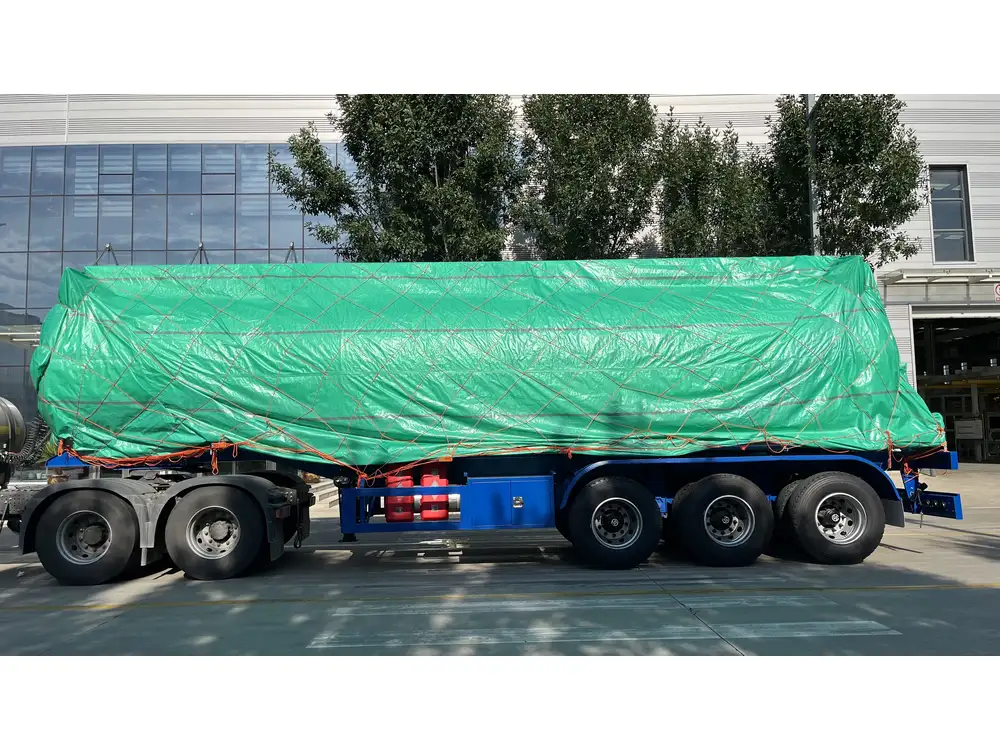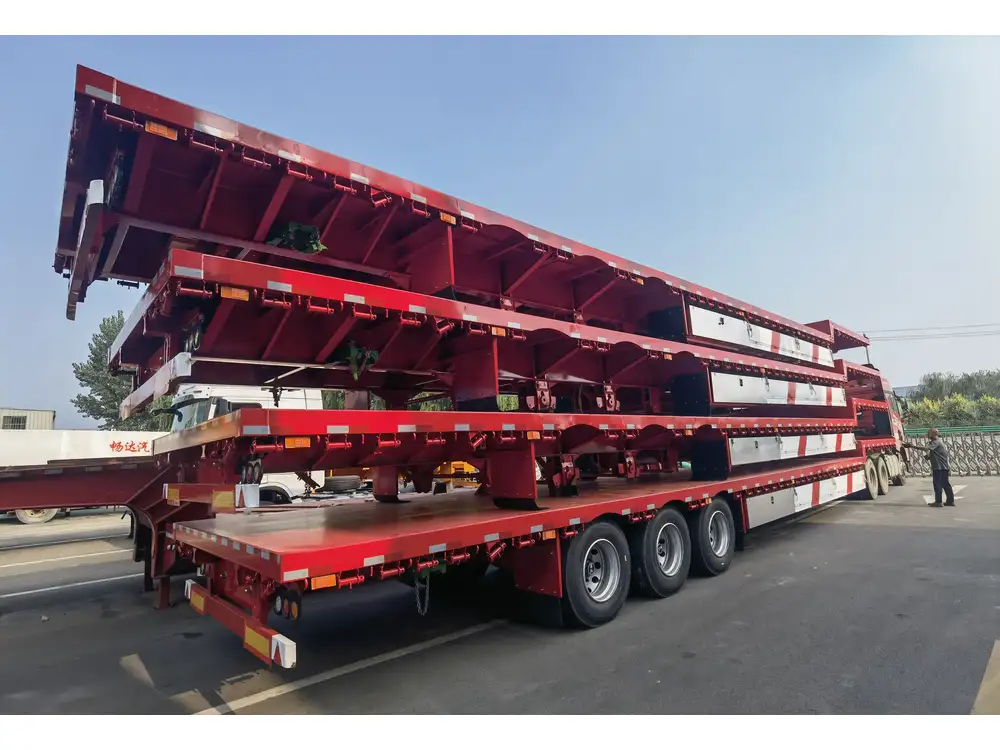When navigating the intricate world of logistics and transportation, understanding the technical specifics of semi-trailers is crucial for efficiency and safety. One of the most commonly utilized trailers in North America is the 53-foot semi-trailer. As operators, freight companies, and logistics providers consider their loading equipment, it’s essential to determine the width of the opening of these trailers. This guide aims to dissect this essential measurement, provide detailed insights, and explore related concepts that impact your operations.
Key Dimensions of 53-Foot Semi-Trailers
To facilitate effective loading and unloading processes, we must first understand the overall dimensions and design of a 53-foot semi-trailer. Below is a breakdown of the most significant measurements:
| Dimension | Inches | Feet | Details |
|---|---|---|---|
| Overall Length | 636 | 53 | Standard physical length. |
| Overall Width | 102 | 8.5 | Maximum width for highways. |
| Interior Height | 110 | 9.2 | Standard inside height. |
| Door Opening Width | 90 | 7.5 | Usable width for most freight. |
| Door Opening Height | 102 | 8.5 | Important for container dimensions. |
Door Opening Width: A Closer Look

1. What Is the Door Opening Width?
The door opening width on a 53-foot semi-trailer is typically around 90 inches (7.5 feet). This measurement is critical, as it dictates the types of cargo that can be easily loaded and unloaded. Understanding this opening width can significantly impact your loading strategy and equipment choices.
2. Why It Matters
The door opening width not only affects how items are brought into the trailer, but it can also influence:
- Loading Equipment: Selection of forklifts, pallet jacks, and conveyors needs to be compatible with the opening dimensions.
- Cargo Types: Specific cargo dimensions, such as containers and pallet sizes, must fit through the door.
- Operational Efficiency: An accurately measured and understood opening can lead to reduced loading/unloading times and improved workflow.
3. Factors Influencing Door Opening Measurements
Several design factors impact the door opening width, including:
- Trailer Manufacturer: Different manufacturers may have slight variations in design that can affect measurements.
- Trailer Type: Variants exist, including refrigerated trailers and flatbeds, each with unique specifications.
- Custom Modifications: Custom trailers may have altered door widths depending on client requirements.

The Relationship Between Width and Cargo
1. Cargo Width
Understanding how the door opening width correlates with your cargo’s dimensions is crucial for optimizing the loading process. A typical 53-foot trailer commonly carries:
- Pallets: The most standard pallet size is 48 x 40 inches. Given the 90-inch door width, multiple pallets can fit side by side.
- Boxes and Containers: Standard shipping containers (such as 20-foot or 40-foot containers) often need to pass through the door efficiently.
2. Load Planning and Optimization
To maximize loading efficiency and minimize wasted space inside the trailer, it’s imperative to create a load plan. This plan should account for:
- Orientation of Cargo: Some items might be better placed vertically or horizontally, depending on the measurements.
- Securing Loads: Ensure that loads can be secured without violating safety protocols, taking into account the door width.
| Cargo Type | Typical Dimensions (Inches) | Fits Through Door? |
|---|---|---|
| Standard Pallet | 48 x 40 | Yes |
| Industrial Equipment | Up to 80 | Yes with proper fit checks |
| Large Boxes | Varies, up to 60 | Condition-based |
| Containers | 20-foot, 40-foot | Needs assessment |

Operational Considerations
1. Safety Protocols
Efficient loading goes hand in hand with safety. Pay attention to:
- Weight Limits: Overloading a semi-trailer, regardless of the opening width, can result in hazardous driving conditions and legal infractions.
- Proper Load Distribution: Uneven weights can affect trailer handling and lead to accidents or cargo damage.
2. Regulations and Compliance
The Federal Motor Carrier Safety Administration (FMCSA) sets forth regulatory guidelines for truck and trailer dimensions. Familiarity with these requirements can save time in loading dock operations and avoid potential fines.

3. Considerations for Weather
Understanding how weather factors in trailer operation is paramount:
- Impacts of Rain and Snow: Ensure that loading processes consider these elements to avoid slip hazards and cargo damage.
- Temperature Control: Particularly relevant for refrigerated trailers, managing the internal environment is crucial for maintaining cargo integrity.
Enhancing Loading Efficiency: Best Practices
- Pre-Loading Inspections: Prior to loading, inspect the trailer’s integrity and cleanliness.
- Use of Technology: Employ advanced tools, like automated loading systems, that can work seamlessly with the dimensions of the trailer.
- Personnel Training: Ensure your team is well-versed in load securing protocols and equipment handling.
Common Questions and Further Insights

What are the legal width limits for semi-trailers?
The Federal guidelines stipulate a maximum width of 102 inches for commercial trailers on public roads. However, always check local laws as some states may have variations.
Can custom modifications change the opening dimensions?
Yes, customizing a trailer for specific needs, like height or loading efficiency, can significantly alter door opening dimensions.
Conclusion
The detailed understanding of how wide the opening of a 53-foot semi-trailer is, alongside the associated operational considerations, directly affects your logistics efficiency. Addressing the technical specifications of the trailers can dramatically enhance operational flow, minimize costs, and ensure compliant practices across your operations.
For manufacturers and carriers alike, thorough knowledge of all dimensions as highlighted above—especially the door opening—permits better strategic planning and improves loading mechanics. Recognizing how various aspects of trailer design interplay with cargo management not only prepares your operation for current market demands but also positions you for future success.



